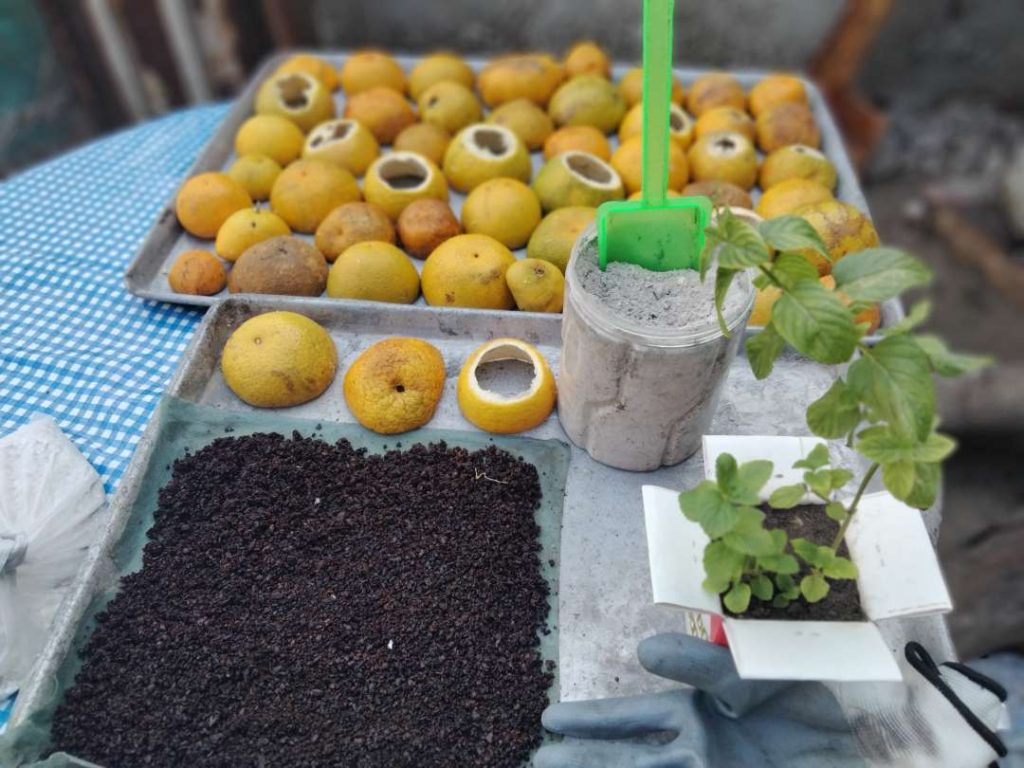What if you could give good use to one of the components that most generate garbage, dirt, and bad odors in the city? This was the question that guided a group of Mexican students who created “Fishtilizante”, an organic fertilizer elaborated from fish remains. The product is rich in nutrients that help the growth and development of plants. The innovation was a finalist in Solve for Tomorrow in Mexico in 2022.
The students were 16 and 17 and were in the fourth semester of Higher Secondary Education (penultimate year of mandatory schooling). The mediator teacher, Sonia Castillo Salinas, is from the industrial chemistry area. According to the educator, the study programs are very marked by the issue of entrepreneurship and young people have a subject called production process control. “We seek to handle Information and Communication Technologies (ICT), then students work from the product to its presentation, production, and packaging ,” says Salinas.
In classes, students were asked to reflect on the problems of their municipality. Tampico is a city in the state of Tamaulipas in Mexico, located on the coast of the Gulf of Mexico. It is an urban area, surrounded by freshwater saltwater. According to the educator, the port circulation leaves fish that becomes food for animals such as seagulls, but still leaving residues after. “We observed this fact and realized that these waste, both head and skeleton and scales, are rich in phosphorus and that we could manipulate them to give it a new use,” she explains. They searched and concluded that organic fertilizers could be made.
With the fish remains, the team made the composting, adding foods leftovers they brought from their homes such as tomatoes or potatoes residues, fruits, and eggs. “Each residue has a property that improves the composition. We found an opportunity in the orange peel, for example, which helps to keep away the insects,” she reports.

Improvements throughout the process
Although it was very nutritious, the entire mixture gave off a strong bad smell. To solve it, the team thought about using the citronella plant, which smells like mint but is even more powerful. However, mixing odors was not the best solution. They needed a neutralizing component. “One of the kids works on weekends in a trade where roasted chicken is sold. He perceived that a lot of coal residue was generated and I said to them: Look for the utility these remains can have,” recalls the teacher. Finally, the student discovered that this material has nutrients and odor inhibitors that could be interesting for “Fishtilizante”.
In addition to the prototype components, an important factor is that the region has a warm temperature, helping with composting. But the idea was to develop a final product as a powder, to facilitate its use and possible commercialization. Then, they crushed the organic compound with a blender and dried it. “First, they did it directly to the heat of the environment and then we were improving it with the structure of an oven,” she recalls.
Creativity is born from the needs. When there is a difficulty, we will have to look at the problem from another perspective, believes the educator.
With the dust ready, they proved their effectiveness in basil that had a plague. “It improved a lot and very fast,” she remembers, proudly. In the end, the team still wanted to make sure that the project was sustainable in its package, made out of paper.
The experience brought ideas and motivation for the future
According to the teacher, the experience highlighted the value of collaboration among young people. Although each one had specific responsibilities, she stimulated them to know a little about everything and to help each other whenever necessary.
For her, with 31 years of teaching, participation in Solve for Tomorrow was very motivating. “I am very close to withdrawing and I feel that this is a good way to finish the cycle. Now all the students already expect the next call of the program,” she says.
For the future, the project aims to improve composition by doing specific tests with the suckermouth catfish, also known as common pleco. In Tampico, as well as in many parts of the world, this fish is considered an invasive species that creates problems in ecosystem balance. “It is a predator of other very important reef species, which are currently a World Heritage,” reports the teacher.




